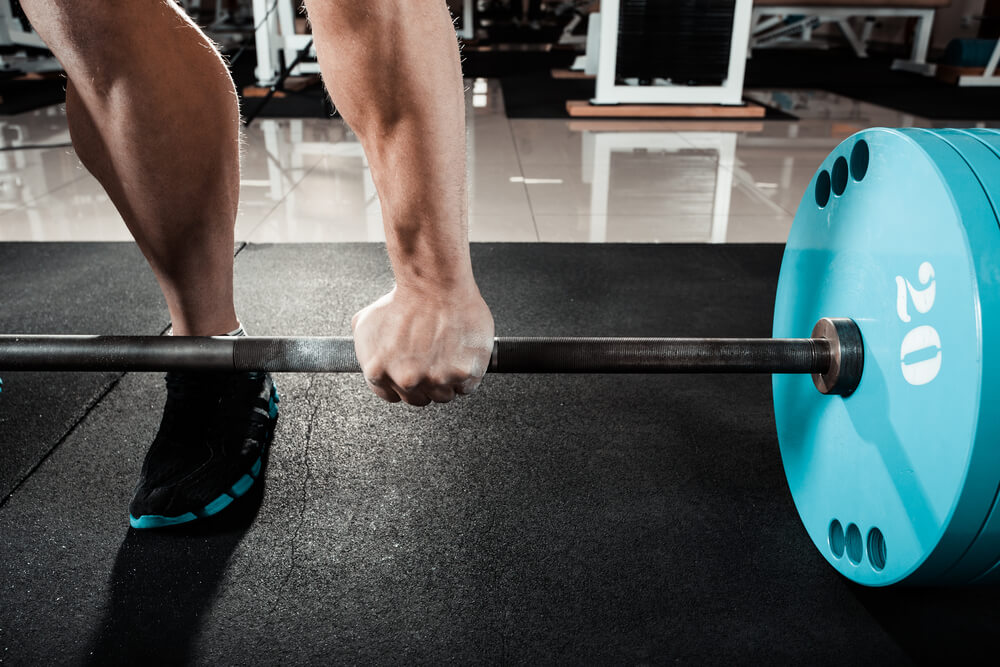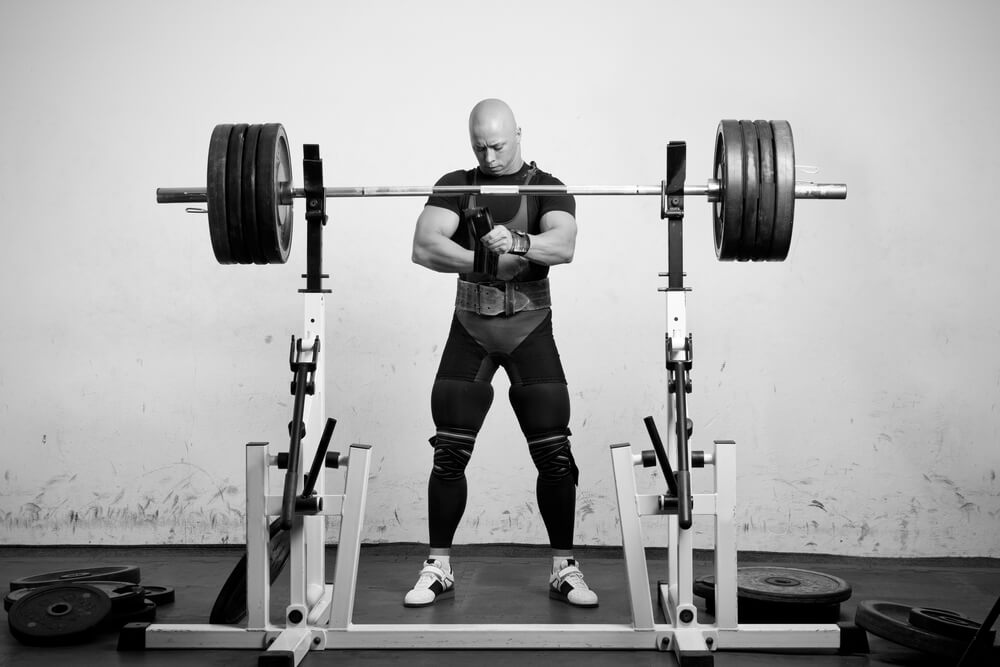
If you want real gains, you have to mix things up! With offset load and unilateral training, you’ll look great in no time!
Regular strength training programs can turn into dull routines if you do not change things up.
This may affect your training program because you will be bored. It could also affect your muscles, as they may not get enough of a challenge. Depending on the individual, sometimes adding a heavier load just does not do much for a training program. That is where unilateral and offset load training takes command.
They both focus on slightly different areas of your body than you would get from doing similar exercises. It is also important to note that both of these variations are not to be put in place of the compound lifts, which are done at the start of a workout. Let’s take a closer look at unilateral and offset load training to really get a sense for how they could help in your training.
What Is Unilateral Training?
Unilateral training is using only one side of your body to do an exercise such as a single arm biceps curl. One of the primary reasons you would do this is because it allows you to focus on just one side of your body at a time, which during isolation is sometimes better. The better your muscles contract means the more beneficial your exercise is. Another reason to do this would be to correct muscle imbalances around your body.
How do you know if you have this problem?
Simple, you’ll know it if one side of your body is finishing a compound movement faster than the other. For example, while doing a bench press, your right side will press the weight up significantly faster than your left side. This causes the bar to be imbalanced and may place strain on the muscles of your left side.
You would then do unilateral training on the left side with heavier weight than you would be using for your right side. Basically, you are trying to play catch up with your strength to make both sides almost as strong. This is quite common because most everyone has one side that is more dominant.
Unilateral training can sometimes be mixed with offset training because both of them are actually taking place. For example, you are doing a suitcase deadlift with a dumbbell on one side of your body to lift. This is technically a unilateral movement since you will alternate the use of each side or region of your body.
However, both sides of your body are being used to squat and then push your body back up, so the side holding the weight is causing an offset balance.
Does it really matter what the proper term to use should be?
Not really, but it is good to know if you are searching for more info.
What Is Offset Load Training?
To offset your body you generally need two weights of different amounts. That is the case unless it is an exercise like the suitcase deadlift that we just discussed. Load is the term used for how much weight is being lifted for that particular set of reps. Offset training can be a little awkward at first. Once you get used to doing it though, you will notice how effective it can be.
Much like what was discussed with unilateral training; this can be fixed with offset training as well, but in a different way.
Take the barbell biceps curl for an example. You will load one side of the bar with a load that targets strength gains for the biceps muscle that is weaker.
Of course, you will then put a maintenance load amount for the side that is stronger. After around two or three weeks, your biceps should start to match each other’s strength levels and size.
Core strength training is the other reason you would want to use offset load training every other week or so. Causing your body to become imbalanced through uneven weight distribution forces your core to contract and protect your spine to stay erect properly. This type of training is also capable of increasing your size and power.
Unilateral And Offset Load Training Aren’t Core Lift Replacements.
Do not replace core lifts (or big lifts) with these two types of training. These types of training are supposed to be implemented into a proper workout program that focuses on strength gains and/or power gains.
Strength does not necessarily have to be linked with mass gains. Surely some muscle mass will develop as the muscles become stronger, but the true intention is to strengthen your muscles and bones for better overall health.
You should implement them into your training program as the third or fourth exercise of the day. One exercise from these two types of training will suffice, but you can do two if you are focusing on a core-strengthening day. The point of this is to show that they are considered supplemental exercises and isolation based.
Use Safe Loads For Unilateral And Offset Training.
As mentioned, load is used to describe the amount of weight you choose for an exercise. Heavy loads for some exercises are okay. But, for the most part, you should use moderate load settings to keep your body from straining under too much pressure.
Your spine is the most important thing to worry about. You should not stress it too much. Moderate loads mean you can do around 8 to 10 reps for each set. Don’t forget also that the load amount you choose should be just light enough to not fail on a set.
You do not want to lift heavy loads when doing barbell offset training lifts. Using heavy loads will create too much of an imbalance and cause you to lose your center of gravity. This could obviously be a dangerous situation for you or anybody in the surrounding area. Be smart and keep the loads reasonable. Again, you are not trying to build large muscle mass with these exercises.
Core Focus: This Is How To Get The Most Out Of These Types Of Training.
Unilateral and offset training are special tools for any person that trains frequently. This is especially true for athletes. When it comes to your core muscles only a few are on the outer layer of your body. The rest are deep within your body close to your spine. Focusing on these inner muscles for core exercises is a must if you wish to get anywhere with a focused training program.
One of the main muscles of focus that affects a lot of the energy production within your body is the diaphragm. Most people know this muscle mainly for how it helps singers. Even if you don’t plan on doing a concert, it’s still important.
Why?
It is also vital for energy release. Powerlifters learn to use the diaphragm to their advantage to do better power movements.
You activate this muscle properly by breathing in with your lower stomach region. Do not breathe in with your shoulders. Breathing in with your shoulders implies that you are using your chest and upper stomach to breathe in causing your shoulders to roll back. When this occurs not enough oxygen is being taken in to distribute the energy that is within.
Breathing in with your diaphragm allows you to have a higher intake of oxygen and also fully exert energy throughout your body.
These Are Some Great Exercises For You To Use…
Here are a few of the most common unilateral and offset training based exercises to consider implementing into your program. Start doing these today and you’ll soon reap the rewards and wonder why you weren’t doing them before.
#1 Offset Farmer Walk
The farmer walk is when you literally hold weight in both hands at your sides and walk a certain distance. This is not only developing strength throughout your body, but also is somewhat like a cardio workout. Your heart rate is definitely going to be elevated doing the farmer walk.
Your core will, of course, be targeted significantly because your spinal erectors, obliques and abs muscles are hard at work to keep your body upright. Offset the weight by holding 25% less weight on one side of your body and then alternate sides.
#2 Offset Dumbbell Step Up
Step ups are when you simply step up onto an elevated area and then bring your other foot up to stand on the object or area. Then you reverse the process and take a step back down to repeat again. Adding resistance through dumbbells boosts the intensity of your exercise.
As an added bonus, your muscles will get a better workout especially in the abs region and calves. While doing the exercise with two dumbbells, you have to lower the offset hand by 25% and then alternate sides after each set.
#3 Single Arm Overhead Press
This is a unilateral exercise where you press only one dumbbell up for each rep and then alternate sides following each set. This places specific emphasis on each shoulder’s muscles and gives them a chance to grow properly. Use of light to heavy loads is fine. The muscles used for this exercise receive more attention when performed with one arm.
This same concept applies to other pressing movements such as the bench press. There are two differences. The first relates to what areas of muscles are being targeted. The other difference is the overall execution.
These exercises are great for your training program and are easy to insert into anything you like. Just follow the directions to stay in check.
Don’t Forget To Use Proper Form.
Proper form is always important. But, it is even more vital when it comes to offset and unilateral training. The reason is because you have to be concerned about protecting your spine and preventing injuries from occurring. You have to maintain a neutral spine position for all movements.
There really aren’t that many exercises that require you to use a rounded back.
What is a neutral spine position?
This basically implies that your spine is vertically straight. If you look at a spinal diagram, you will notice that your spine has a curve going up and down it, so you are not literally keeping your spine fully straight.
As mentioned, when you shift the balance of your body you create tension around your spine due to muscles trying to correct the situation. While this is going on, your spine becomes fully protected with the muscles surrounding it.
However, when in a rounded back position during movements, your spine is not protected very well and can become easily strained.
Many lower back injuries that happen during training occur because of improper form. That is especially true with the two types of training we’ve mentioned in this article. Don’t let that happen to you. Use proper form.
Conclusion
Simply implement a few exercises for each training week. From there, do them for around one or two months. You will notice that significant strength is present within your core muscles, and any other muscles being worked during the movement. Just keep in mind that you should maintain a neutral spine position.
Also, you should use low weight the first time doing exercises from these two categories, and ensure that you have a proper warm-up session as well to keep your joints and muscles loose.
– By Brian Pankau, CPT
Latest posts by Terry M (see all)
- Garage Gyms - Aug 1, 2018
- Kettlebells – Why They Should Be Added To Your Routine. - Jul 24, 2018
- Weight Belts: What Are They Really For? - May 31, 2018











